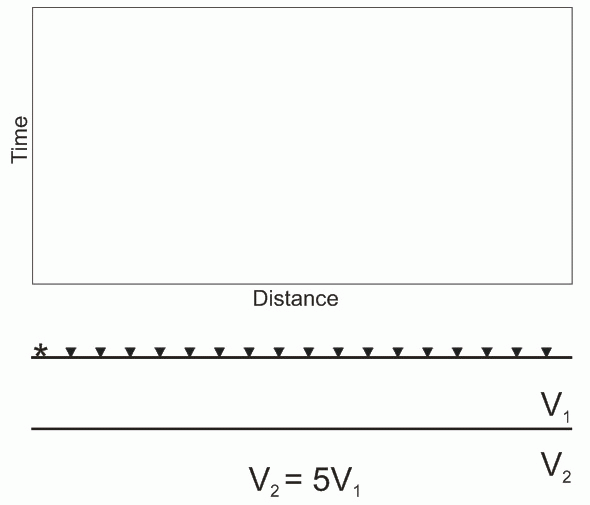The crossover distance is the distance from the source at which the critically-refracted energy from the next deepest layer overtakes the critically-refracted energy from the previous layer (in the two-layer case, the energy traveling through layer 1 is direct, not refracted energy, but the idea is the same). This is illustrated by the following animation:

The direct energy (red) is the first-arrival energy at the first six geophones. However, by the seventh geophone, the direct energy is overtaken by the critically-refracted energy (green). The reciprocal of the slope of each segment is equal to the apparent velocity of the material. If there were a third, even faster layer, a third slope and second crossover distance would eventually appear on the travel time graph. The crossover distance, along with the velocities indicated by the slopes of the segments, are used to determine the refractor depth.
